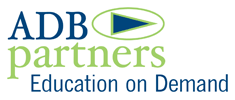
Blended learning, that combination of f2f and online experiences, offers a kaleidoscope of learning opportunities. To provide quality education experiences, blended learning must include three basics: content, process, and product. One of my mentors, Irving S. Sato, set the framework for education excellence, particularly for gifted and talented students, with these three concepts. However, these foundational ideas apply across the learning spectrum including professional development and training. For quality blended learning, content, process, and product are prerequisites. This post focuses on content.
Standards and Best Practices. Adult learning often is comprised of meetings, courses, or conference sessions. Speakers and presentations are chosen based on a submission process which can be quite fine if the goal is a potpourri of ideas dependent on the speaker content. If the goal, however, is standards or competency based education, the learning experience content must be defined by professional or industry standards. For association management, the content described within the Certified Association Executive Program provides guidelines for best practices. In other professions, for example, school business and operations, competencies have been established; the Texas Association of School Business Officials (TASBO) bases its extensive professional development program on researched and broadly recognized components and competencies. For blended learning to meet the quality threshold, content must be defined according to established standards and best practices.
Vertical Alignment. In the curriculum world, alignment refers to the vertical and horizontal connections between and among content goals and objectives. Alignment is used to build increasingly difficult knowledge or skill sets. For vertical content alignment, think of a ladder where the first rung represents basic concepts and foundational goals and the top rung is the highest or most complex attainment. To get to the top, the learner needs to successfully climb each rung of the ladder. Some learners may run to the top and others may take their time. Either way the professional possesses or acquires increasingly complex content in a sequential order.
Horizontal Alignment. In horizontal alignment, the content arrangement is about relationships. How is the course content related to other knowledge or skills that an employee at this level will need? This may seem like extreme parsing but remember whether an executive or a staff member, each employee has multiple demands and responsibilities. Further each person is part of a team. Therefore, to create more seamless and successful operations, individuals need clear connections between and among knowledge and skill sets. For horizontal alignment, think of a tile floor; as the tile is laid, each piece must match or complement its neighbors to create the desired pattern. So it is with horizontal content, the parts and pieces fit together to form knowledge patterns and related skills.
To create the kaleidoscopic effect of substantive blended learning, content should be based on standards and best practices and aligned both vertically and horizontally. This takes planning and development. Quality blended learning is not created through happenstance. In future posts, I will explore process and product.
© Photographer: Mark Liedel | Agency: Dreamstime.com” title=”BLUE KALEIDOSCOPE © Mark Liedel | Dreamstime.com “>
